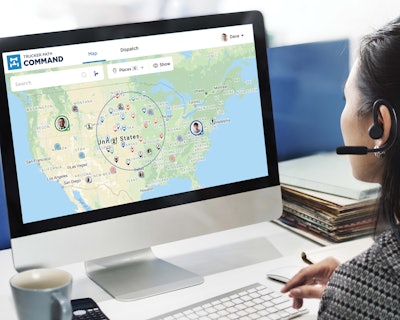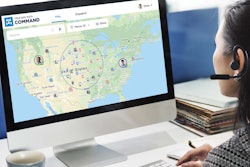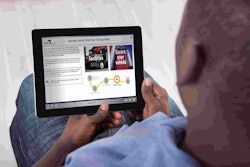
On the careers page of FirstFleet’s website, the Tennessee trucking company shares a video explaining its core values with the acronym SERVE. The final E in the acronym stands for “embrace change as a reality of progress," and that includes the evolution of technology.
Register today for "Finding and Keeping Drivers in a Demand-Driven Job Market" webinar
Executives from three fleets share the driver recruiting and retention strategies that have propelled their companies to become some of the industry’s best, and how they plan to stay there. This CCJ webinar is sponsored by Bestpass.
The company boasts its technology to not only attract new drivers but also retain existing drivers, which is important when recruiting, interviewing, training and dealing with costly driver turnover and an industrywide driver shortage.
“Holistically, technology is absolutely a piece of the equation for attracting and retaining driver talent. I would not say that necessarily every driver who comes to FirstFleet chooses us because of that. I would say that we do see technology as a supporting component of being a reputable and enjoyable place of employment,” said FirstFleet CIO Austin Henderson. “There has been a long history of transportation companies having technology but not fully utilizing it down to the driver’s hands. If it can make the drivers’ lives better, or their job a little bit easier, or save them 15 minutes, we're going to try our best to make that interaction as efficient as possible. Technology is … one of the primary ways we do that.”
While most trucking companies realize the importance of technology – with things like predictive maintenance and trailer tracking to increase uptime, for example – as a business tool to help boost productivity, not as many recognize technology as a way to recruit and retain drivers.
“Lord knows when it comes to recruiting, everybody talks about the rate per mile and general benefits, but ‘we care, and we want to give you tools to make life a little bit easier’ seems to get lost sometimes in that message,” said Chris Oliver, chief marketing officer at Trucker Path. “The real key there is to focus on the (driver) side of the equation, making life easier and more comfortable when they're on the road, helping to just make a day in the life a little bit better. So many technologies as a whole focus so hard on the business and the productivity gains that they tend to overlook – or maybe not even think about – what it does for the driver.”
Trucker Path offers a mobile app for truckers that can provide the most efficient and direct route to a destination while also showing drivers where the best tacos are along that route, among other features. The company recently launched a new transportation management system, COMMAND, that is designed to enhance driver relationships and quality of life while managing operations.
Motorcity, a transport and logistics software developer, also recently launched a technology designed to make the driver’s life easier by enhancing communication between drivers and dispatchers. RELAY is a cloud-based communication platform that provides real-time dispatch-to-driver messaging.
“That’s really what RELAY is all about is to modernize the dispatch-to-fleet communication into what I call the modern world, and beyond that, it's more about relationship management and getting the dispatch side closer to the driver,” said Motorcity President and co-founder Bob Stemple. “Historically, there's been this lag between the time you send a message and the time the driver actually receives it. Of course, drivers are on limited clocks, so minutes add up, and it reduces the hours they can drive when they have to wait for either load information or response to questions and things like that.”
Stemple said nobody wants to sit in a cold truck in Michigan staring at a box, waiting for a message, and RELAY helps decrease that downtime and increase retention in the process by relieving some of the frustration. RELAY also offers a feature that recognizes drivers’ birthdays and work anniversaries, among other things.
“We all know driver retention and attraction is an issue,” Stemple said. “It just seems very basic to me that if you can streamline the communication with your fleet, you're going to have a better relationship with your drivers, and then they're going to be more satisfied than staring at a box waiting for a message.”
When Stemple first started working in the trucking industry, Qualcomm was the big telematics player, allowing companies to send messages to drivers with only a three-minute waiting period. But three minutes per message adds up quickly, taking too much time when modern-day technology is real-time.
“Those are the spaces that I would love to see technology continue to evolve is how to give drivers back those precious 15-minute segments of their time that collectively, over a 14-hour workday, amount to significant quality-of-life differences,” Henderson said.
And that is important to driver recruitment and retention in an environment where tensions are high as drivers focus on safety, hours of service and regulations. So when a trucking company can offer technology to improve drivers’ lives, they should use that to their advantage as a recruiting tool, he said.
“A driver’s worst fear is sitting there being detained or broken down on the side of the road. They're generally not getting compensated well, for that … so drivers want the wheels to be turning. That gets into the fact that the driver may or may not make it home for that baseball game for his son or daughter,” Henderson said. “At the end of the day, technology solutions that focus on making the professional driver’s quality of life better is where we need to focus some significant effort.”
But Oliver said, if it’s about quality of life, it is important for companies to also consider how much extra work any given technology will require a driver to take on in order to gain efficiencies because it's easy to overwhelm drivers with the vast number of features available to “make their lives easier” that it can actually make it more complicated.
Oliver said the ELD mandate was a major tipping point for the industry because it forced everyone to use the technology ubiquitously, opening the gate for additional technology advancements. But companies need driver buy-in to make it work.
While most drivers carry a smartphone these days, using technology might not always be an attraction, he said, especially for old-school drivers who are more comfortable making a call than using an app.
He said it’s important for companies that choose to market technology in their recruitment to be mindful of the messaging and how it makes the driver feel.
But overall, trucking companies should consider marketing their use of technology to prospective drivers, said Ken Van Heel of Motorcity.
“I do think that would be a piece that they would use as part of their outreach to attract drivers – that they're investing in the latest technology to bring the most efficiency to the communication and to the drivers’ operation.”















